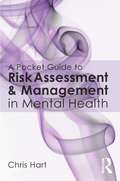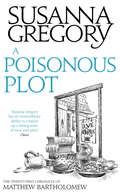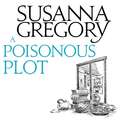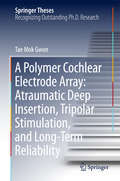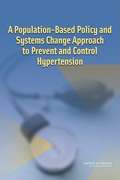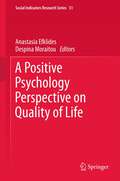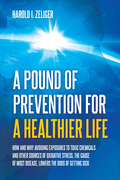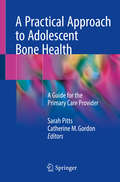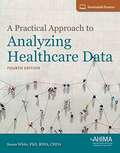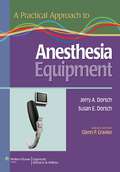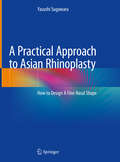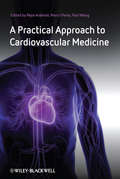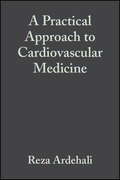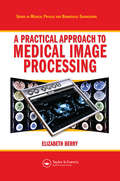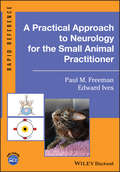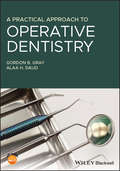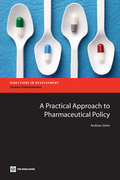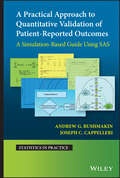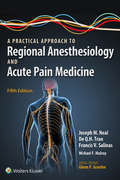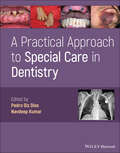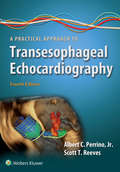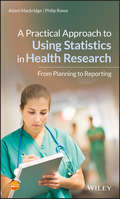- Table View
- List View
A Pocket Guide to Risk Assessment and Management in Mental Health
by Chris HartRisk assessment and risk management are top of every mental health trust’s agenda. This concise and easy-to-read book provides an informative and practical guide to the process of undertaking a risk assessment, arriving at a formulation and then developing a risk management plan. Covering everything a practitioner may have to think about when undertaking risk assessments in an accessible, logical form, the book includes practice recommendations rooted in the latest theory and evidence base. Attractively presented, plentiful clinical tip boxes, tables, diagrams and case examples make it easy to identify key information. Samples of authentic dialogue demonstrate ways in which to formulate questions and think about complex problems with the person being assessed. A series of accompanying films, professionally made and based on actual case studies, are available on a companion website, further illustrate key risk assessment and management skills. This accessible guidebook is designed for all mental health professionals, and professionals-in-training. It will also be a useful reference for healthcare practitioners who regularly come into contact with people experiencing mental health problems.
A Pocket Guide to Risk Assessment and Management in Mental Health
by Chris HartRisk assessment and risk management are top of every mental health organisation’s agenda. This updated and expanded new edition provides an informative and practical guide to the process of undertaking a risk assessment, arriving at a risk formulation and developing a risk management plan. Covering everything a practitioner may have to think about when undertaking risk assessments in an accessible, logical form, the second edition of A Pocket Guide to Risk Assessment and Management in Mental Health includes new and expanded content on: risk formulation; working in forensic settings; specific mental health disorders; models of suicide and self-harm; and triage. It features practice recommendations rooted in the latest theory and evidence base, clinical tip boxes, tables, diagrams and case examples, along with samples of authentic dialogue which demonstrate ways to formulate questions and think about complex problems with the person being assessed. A series of accompanying videos, professionally made and based on actual case studies, are available on a companion website, further illustrating key risk assessment and management skills. This concise guidebook is designed for all mental health professionals, and professionals-in-training. It will also be a useful reference for all healthcare practitioners who regularly come into contact with people experiencing mental health problems.
A Poisonous Plot: The Twenty First Chronicle of Matthew Bartholomew (Chronicles of Matthew Bartholomew #21)
by Susanna GregoryThe twenty first chronicle in the Matthew Bartholomew series.In 1358, over a century after its foundation in Cambridge, the college of Michaelhouse is facing a serious shortfall of funds and competition from upstarts rivals such as Zachary Hostel. Their problems are made no easier by the hostility of the town's inhabitants who favour the university moving away to the Fens.This simmering tension threatens to break into violence when a well-known tradesman is found dead in one of the colleges. Matthew Bartholomew knows he was poisoned but cannot identify the actual substance, never mind the killer. He also worries that other illnesses and deaths may have been caused by the effluent from his sister's dye works.Torn between loyalties to his kin and to his college, he fears the truth may destroy both his personal and professional life, but he knows he must use his skills as a physician to discover the truth before many more lose their lives entirely.'A first-rate treat for mystery lovers' (Historical Novels Review)'Susanna Gregory has an extraordinary ability to conjure up a strong sense of time and place' (Choice)
A Poisonous Plot: The Twenty First Chronicle of Matthew Bartholomew (Chronicles of Matthew Bartholomew #21)
by Susanna GregoryIn 1358, over a century after its foundation in Cambridge, the college of Michaelhouse is facing a serious shortfall of funds and competition from upstarts rivals such as Zachary Hostel. Their problems are made no easier by the hostility of the town's inhabitants who favour the university moving away to the Fens. This simmering tension threatens to break into violence when a well-known tradesman is found dead in one of the colleges. Matthew Bartholomew knows he was poisoned but cannot identify the actual substance, never mind the killer. He also worries that other illnesses and deaths may have been caused by the effluent from his sister's dye works. Torn between loyalties to his kin and to his college, he fears the truth may destroy both his personal and professional life, but he knows he must use his skills as a physician to discover the truth before many more lose their lives entirely.
A Polluted Font: The Sixteenth Chronicle of Hugh de Singleton, Surgeon (Hugh de Singleton, Surgeon #16)
by Mel StarrASSAILANT AT LARGE When Hugh and Kate's newborn son is taken to the church to be baptized, they are astounded to find that the locked font is completely dry. The possibility of a leak is quickly ruled out, and just as Hugh is beginning to wonder if there may be a sinister explanation for the stolen holy water, Fr Robert is found lying motionless by the rood screen in a pool of blood ... Meanwhile, parliament has passed a poll tax, stipulating that everyone above the age of fourteen is to be treated equally. People are soon scrambling to find the money, while others take the opportunity to exploit their desperation and make some cash... But what connection can there possibly be between this and the events at Bampton? Mel Starr's latest novel is a thoroughly enjoyable medieval crime mystery.
A Polymer Cochlear Electrode Array: Atraumatic Deep Insertion, Tripolar Stimulation, and Long-Term Reliability (Springer Theses)
by Tae Mok GwonThis book describes the design, fabrication and evaluation of a polymer-based neural interface for a cochlear electrode array, reviewed in terms of fabrication process, functionality, and reliability. Polymer-based devices have attracted attention in the neural prosthetic field due to their flexibility and compatibility with micro-fabrication process. A liquid crystal polymer (LCP) is an inert, highly water-resistant polymer suitable for the encapsulation of electronic components and as a substrate material for fabricating neural interfaces. The author has designed, fabricated, and evaluated an LCP-based cochlear electrode array for an improved polymer-based cochlear implant. The thesis deals with 3 key topics: atraumatic deep insertion, tripolar stimulation, and long-term reliability. Atraumatic insertion of the intracochlear electrode and resulting preservation of residual hearing have become essential in state–of-the-art cochlear implantation. A novel tapered design of an LCP-based cochlear electrode array is presented to meet such goals. For high-density and pitch-recognizable cochlear implant, channel interaction should be avoided. Local tripolar stimulation using multi-layered electrode sites are shown to achieve highly focused electrical stimulation. This thesis addresses another vital issue in the polymer-based neural implants: the long-term reliability issue. After suggesting a new method of forming mechanical interlocking to improve polymer-metal adhesion, the author performs accelerating aging tests to verify the method’s efficacy. The aforementioned three topics have been thoroughly examined through various in vitro and in vivo studies. Verification foresees the development of LCP-based cochlear electrode array for an atraumatic deep insertion, advanced stimulation, and long-term clinical implant.
A Population-Based Policy and Systems Change Approach to Prevent and Control Hypertension
by Institute of Medicine of the National AcademiesHypertension is one of the leading causes of death in the United States, affecting nearly one in three Americans. It is prevalent in adults and endemic in the older adult population. Hypertension is a major contributor to cardiovascular morbidity and disability. Although there is a simple test to diagnose hypertension and relatively inexpensive drugs to treat it, the disease is often undiagnosed and uncontrolled. A Population-Based Policy and Systems Change Approach to the Prevention and Control Hypertension identifies a small set of high-priority areas in which public health officials can focus their efforts to accelerate progress in hypertension reduction and control. It offers several recommendations that embody a population-based approach grounded in the principles of measurement, system change, and accountability. The recommendations are designed to shift current hypertension reduction strategies from an individual-based approach to a population-based approach. They are also designed to improve the quality of care provided to individuals with hypertension and to strengthen the Center for Disease Control and Prevention's leadership in seeking a reduction in the sodium intake in the American diet to meet dietary guidelines. The book is an important resource for federal public health officials and organizations, especially the Center for Disease Control and Prevention, as well as medical professionals and community health workers.
A Portrait of Assisted Reproduction in Mexico: Scientific, Political, and Cultural Interactions
by Sandra P. González-SantosThis book paints a comprehensive portrait of Mexico’s system of assisted reproduction first from a historical perspective, then from a more contemporary viewpoint. Based on a detailed analysis of books and articles published between the 1950s and 1980s, the first section tells the story of how the epistemic, normative, and material infrastructure of the assisted reproduction system was built. It traces the professionalization process of assisted reproduction as a medical field and the establishment of its professional association. Drawing on ethnographic material, the second part looks at how this system developed and flourished from the 1980s up to 2010, its commercialization process, how the expansion of reproductive services took place, and the messages regarding reproductive technologies that circulated within a wide discursive landscape. Given its scope and methods, this book will appeal to scholars interested in science and technology studies, reproduction studies, history of medicine, medical anthropology, and sociology.
A Positive Psychology Perspective on Quality of Life (Social Indicators Research Series #51)
by Anastasia Efklides Despina MoraitouThe construct ''quality of life (QoL)'', since the 1980s, when it was introduced, is being used mainly in the context of health problems. Areas of one's life that contribute to QoL are good physical and mental health, efficient cognitive functioning, social support, being able to meet the requirements of professional life, positive emotions, etc (Power, 2003). Work on subjective well-being (SWB), on the other hand, was developed in the context of healthy everyday life; it also has a history of more than 30 years. During this 30-year period factors that have an impact on SWB, such as SES, gender, health, age, and religiosity have been identified (Diener, 2000). A third independent line of research pertains to what has been called Positive Psychology (Seligman & Csikszentmihalyi, 2000), that is, an emphasis on human strengths, such as optimism, hope, wisdom, positive emotions, resilience, etc., which contribute to positive functioning in life. Recently, SWB has been associated to human strengths and to the movement of positive psychology but this did not happen for QoL, possibly because of its emphasis on people with health problems. However, QoL can be conceived of as a generic term that pertains to all people, healthy or not. In this sense, it is closely related to SWB defined as happiness (Diener, 2000). Also, QoL encompasses positive emotions that go beyond happiness and has the advantage that it can be applied to many different domains of life such as interpersonal relations, health-related situations, and professional and educational strivings. Moreover, the mechanism(s) that underpin QoL and SWB can be studied in relation to people's goals and strengths of character, that is, from a positive psychological perspective. Such a perspective can reveal the specificities of "quality" in the various domains of life and, specifically, the positive emotions and strengths that contribute to a happier, healthier, and more successful life, even in face of adversity. Therefore, despite the differences among the three theoretical traditions, namely QoL, SWB, and positive psychology, it is possible to find the common ground they share and each of them can benefit from notions developed in the others. The aim of the present book is to bring together these three traditions, show the interactions of variables emphasized by them, and give an integrative perspective from the positive psychology point of view. It also aims to extend the range of life situations in which one can look for quality and which go beyond the traditional emphasis of QoL on health problems. Thus, the content of the proposed book covers different age populations (from children to older adults), healthy and people facing health problems as well as people facing problems in their interpersonal lives or in their pursuits. It also discusses factors that contribute to marital satisfaction, well being in the school context, and things that people value and cherish. The chapters refer to notions such as happiness, interest, resilience, wisdom, hope, altruism, optimism, and spirituality/religiosity that represent unique human strengths. Finally, it emphasizes the role of goals and motivation that connect SWB with self-regulation and managing of one's life priorities. To conclude, the chapters included in the proposed edited book aim at bringing to the fore new theoretical developments and research on QoL, SWB, and positive psychology that bridges previously distinct theoretical traditions. The proposed book covers a broad range of topics, addresses different theoretical interests and paves the way for a more integrative approach. Finally, it brings together an international set of authors, from USA, Europe, Australia, and Asia.
A Pound of Prevention for a Healthier Life: How and Why Avoiding Exposures to Toxic Chemicals and Other Sources of Oxidative Stress, the Cause of Most Disease, Lowers the Odds of Getting Sick
by Harold I ZeligerA Pound of Prevention for a Healthier Life shows the connection between oxidative stress and the onset of virtually all disease and discusses the causes of oxidative stress induced disease and ways to prevent it. The book includes a unique questionnaire for predicting disease onset in seemingly healthy people, and shows how steps taken to prevent any one disease may prevent many other unrelated diseases.Dr. Harold I. Zeliger, a chemical toxicologist who has been researching the causes of non-communicable diseases for more than 40 years, demonstrates how elevated oxidative stress is responsible for attacks on virtually all body organs and systems and how it triggers the onset of numerous diseases, including ADHD, autism, heart disease, respiratory disease, diabetes, obesity, Alzheimer's disease, Parkinson's disease, cancer and numerous others. The many sources of oxidative stress include not only exposures to toxic chemicals such as pesticides, air pollutants, PCBs and organic solvents, but also to radiation, tobacco smoke, eating some foods, pharmaceutical drug use, illnesses a person already has, emotional stress and others.Zeliger's research shows how elevated oxidative stress need not come from a single source, but can come from multiple sources, and that it is total oxidative stress, no matter what the source or sources, that causes disease. The Oxidative Stress Index, which can be individually arrived at from the questionnaire in the book, allows the reader to determine his or her oxidative stress level, which sources are responsible for it, and what actions can be taken to reduce it and lower the likelihood of disease onset.
A Practical Approach to Adolescent Bone Health
by Catherine M. Gordon Sarah PittsThis comprehensive book thoroughly covers bone health in the adolescent, offering evidence-based guidance for clinical care in the primary care setting, and includes aspects of endocrinology, nutrition, radiology, sports medicine, and rehabilitation. A Practical Approach to Adolescent Bone Health begins with an in-depth review of normal bone physiology, and explains how to optimize bone mass accrual in the healthy adolescent. The following chapters detail the importance of nutrition and physical activity to the skeletal system, while later chapters provide a bone-centric review of clinical history taking, the physical examination, laboratory assessment, and imaging to evaluate bone health. Final chapters delve into providing comprehensive care for specific conditions commonly found in the adolescent, including adolescents with multiple fractures, eating disorders, athletic involvement, chronic illness, various ambulatory limitations, and bone fragility. Clinical vignettes are woven into chapters throughout the book, providing real-world application and highlighting key concepts for practitioners. A Practical Approach to Adolescent Bone Health is a unique resource,and ideal for the primary care clinician, including pediatricians, adolescent medicine specialists, and family medicine physicians, as well as endocrinologists, orthopedic surgeons, and any other practitioner working to guide adolescents towards optimal bone health.
A Practical Approach to Analyzing Healthcare Data
by Susan WhiteA Practical Approach to Analyzing Healthcare Data
A Practical Approach to Anesthesia Equipment
by Jerry A. Dorsch Susan E. DorschThis book is ideally suited for anesthesiologists, residents, and nurse anesthetists who need a concise, practical, easily accessible reference on anesthesia equipment. Written by the authors of the definitive text Understanding Anesthesia Equipment, A Practical Approach to Anesthesia Equipment covers the most commonly used machines and devices and addresses common problems and pitfalls that affect clinical situations. The book is written in outline format.
A Practical Approach to Asian Rhinoplasty: How to Design A Fine Nasal Shape
by Yasushi SugawaraDifficulty in rhinoplasty takes two forms: the aesthetic and the technical. Rhinoplasty surgeons need a sense of beauty to design the target shape, but the shape must comply with the patient’s often problematic demands. The only appropriate approach is to suggest two or three shapes that suit the patient’s appearance and expectations, and ask the patient to choose between them. The technical difficulty, on the other hand, lies in assessing the anatomical character of the problem and selecting the procedure that will achieve the desired shape. This textbook will help readers to make accurate diagnoses, simulate the target shape employing generally used retouch software, suggest to patients different target shapes, and learn how to choose the best procedure to produce the selected target shape. It will assist in the performance of rhinoplasties which take into account the individual patient’s requirements and achieve aesthetic results that guarantee patient satisfaction.
A Practical Approach to Cardiovascular Medicine
by Paul Wang Reza Ardehali Marco PerezWritten, reviewed, and edited in a collaborative effort by cardiology fellows and faculty of one of the most prestigious academic centers in the country, this concise volume gives cardiology fellows the book they have long needed. Keeping coverage of the underlying pathophysiology and mechanism of disease to a minimum, the authors focus on the diagnosis and treatment of cardiac disorders. Practical and easily accessible at the time of decision making, the book relays important concepts through concise and to-the-point pearls and by utilizing algorithm charts and illustrations.
A Practical Approach to Cardiovascular Medicine (WGF ES ePub)
by Paul J. Wang Reza Ardehali Marco PerezWritten, reviewed, and edited in a collaborative effort by cardiology fellows and faculty of one of the most prestigious academic centers in the country, this concise volume gives cardiology fellows the book they have long needed. Keeping coverage of the underlying pathophysiology and mechanism of disease to a minimum, the authors focus on the diagnosis and treatment of cardiac disorders. Practical and easily accessible at the time of decision making, the book relays important concepts through concise and to-the-point pearls and by utilizing algorithm charts and illustrations.
A Practical Approach to Medical Image Processing
by Elizabeth BerryThe ability to manipulate and analyze pictorial information to improve medical diagnosis, monitoring, and therapy via imaging is a valuable tool that every professional working in radiography, medical imaging, and medical physics should utilize. However, previous texts on the subject have only approached the subject from a programming or computer s
A Practical Approach to Neurology for the Small Animal Practitioner (Rapid Reference)
by Paul M. Freeman Edward IvesA Practical Approach to Neurology for the Small Animal Practitioner provides veterinary practitioners and students with a comprehensive guide to diagnosing and treating neurological cases in small animal practice. Covering the most important considerations for the general practitioner, the book includes chapters on clinical history taking, a ‘stress-free’ approach to the neurological examination, the most common neurological presentations in general practice, neurological emergencies, and more. It is easy to read, packed with practical hints and tips, and the information is presented using tables and bulleted lists, with accompanying images and videos to illustrate the concepts. A Practical Approach to Neurology for the Small Animal Practitioner is ideal for newly qualified vets, veterinary students, and experienced vets seeking a refresher.
A Practical Approach to Operative Dentistry
by Gordon B. Gray Alaa H. DaudPerfect your transferable dental clinical skills with this new and highly practical reference A Practical Approach to Operative Dentistry delivers a thorough exploration of the theoretical and practical aspects of operative dentistry, followed by an illustrated step-by-step guide of common clinical procedures. Designed to remind students of the key steps of a variety of operative procedures, it is heavily illustrated with over 400 images of clinical procedures and covers core topics such as: Instruments and matrices, isolation, dental charting, and the use of minimally invasive dentistry Treatment of intracoronal restorations, including pit and fissure caries, posterior approximal restorations, anterior restorations and restorations in the cervical third Exploration of extracoronal restorations, including gold restorations, porcelain fused to metal and ceramic crowns A Practical Approach to Operative Dentistry is the perfect textbook for undergraduate dental students. It is also useful to dentistry graduates undertaking clinical rotations during their Dental Foundation Training, and overseas graduates preparing to take the Overseas Registration Examination (ORE) held by the General Dental Council, or the License in Dental Surgery (LDS) exam of the Royal College of Surgeons.
A Practical Approach to Pharmaceutical Policy
by Andreas SeiterPharmaceuticals are an essential component of health care. But for many people in low- and middle-income countries, access to the medicines they need to prevent or treat severe illnesses is limited. Typical problems are lack of availability, costs that exceed the individual's purchasing power or lack of competent "agents" - health workers that are well trained to give the correct advice on which medicines to take. Pharmaceutical policy is the part of health policy that aims at addressing these problems and increasing access to safe, effective and affordable medicines for all patients. There are many obstacles against achieving these goals. Such obstacles can arise from financial interests on the side of suppliers and health care providers, who may benefit from charging higher prices and issuing more prescriptions than might be justified from a clinical and economic viewpoint. Or from rogue suppliers trying to introduce low quality or counterfeit drugs into markets with less effective regulation. Also, corruption and ineffective bureaucracies sometimes interfere with well intended programs to offer access to essential medicines for the poor. This book offers policy makers a hands-on approach, tested in the World Bank's field work in many countries, for assessing the pharmaceutical sector, recognizing typical "patterns of dysfunction" and developing strategies to quickly deal with the most urgent problems while at the same time building a platform for sustainable long term policy. It offers examples from a variety of low- and middle income countries and provides practical assessment tools for policy makers. The book ends with the author's outlook on future developments in this complex policy field.
A Practical Approach to Quantitative Validation of Patient-Reported Outcomes: A Simulation-based Guide Using SAS (Statistics in Practice)
by Joseph C. Cappelleri Andrew G. BushmakinA Practical Approach to Quantitative Validation of Patient-Reported Outcomes A Practical Approach to Quantitative Validation of Patient-Reported Outcomes A Simulation-Based Guide Using SASIn A Practical Approach to Quantitative Validation of Patient-Reported Outcomes, two distinguished researchers, with 50 years of collective research experience and hundreds of publications on patient-centered research, deliver a detailed and comprehensive exposition on the critical steps required for quantitative validation of patient-reported outcomes (PROs). The book provides an incisive and instructional explanation and discussion on major aspects of psychometric validation methodology on PROs, especially relevant for medical applications sponsored by the pharmaceutical industry, where SAS is the primary software, and evaluated in regulatory and other healthcare environments. Central topics include test-retest reliability, exploratory and confirmatory factor analyses, construct and criterion validity, responsiveness and sensitivity, interpretation of PRO scores and findings, and meaningful within-patient change and clinical important difference. The authors provide step-by-step guidance while walking readers through how to structure data prior to a PRO analysis and demonstrate how to implement analyses with simulated examples grounded in real-life scenarios. Readers will also find: A thorough introduction to patient-reported outcomes, including their definition, development, and psychometric validationComprehensive explorations of the validation workflow, including discussions of clinical trials as a data source for validation and the validation workflow for single and multi-item scalesIn-depth discussions of key concepts related to a validation of a measurement scaleSpecial attention is given to the US Food and Drug Administration (FDA) guidance on development and validation of the PROs, which lay the foundation and inspiration for the analytic methods executed A Practical Approach to Quantitative Validation of Patient-Reported Outcomes is a required reference that will benefit psychometricians, statisticians, biostatisticians, epidemiologists, health service and public health researchers, outcome research scientists, regulators, and payers. STATISTICS IN PRACTICE A series of practical books outlining the use of statistical techniques in a wide range of applications areas: HUMAN AND BIOLOGICAL SCIENCES EARTH AND ENVIRONMENTAL SCIENCES INDUSTRY, COMMERCE AND FINANCE
A Practical Approach to Regional Anesthesiology and Acute Pain Medicine
by Joseph M. Neal De Q.H. Tran Francis SalinasApply the latest advances in regional anesthesia and acute pain medicine! Originally authored by Michael F. Mulroy, MD, this respected title has helped practitioners provide effective regional anesthesia for nearly 30 years. Now it has been retitled A Practical Approach to Regional Anesthesiology and Acute Pain Medicine to reflect the Accreditation Council for Graduate Medical Education’s recent establishment of Regional Anesthesiology and Acute Pain Medicine as an anesthesiology fellowship. This clinical reference has evolved with the many changes in this subspecialty to continue bringing you the up-to-date, clinically focused, hands-on guidance you need to offer your patients the best possible care.
A Practical Approach to Special Care in Dentistry
by Pedro Diz Dios Navdeep KumarA Practical Approach to Special Care in Dentistry Learn to treat dental patients with disabilities or who are medically compromised A Practical Approach to Special Care in Dentistry delivers a comprehensive and robust overview of special care dentistry reflecting the most common compromised clinical conditions dentists will regularly encounter. It discusses more than 50 topics based on real-world clinical cases focusing on two main areas: patients with disabilities and medically compromised patients. The book uses a problem-based learning approach and helps the reader to apply knowledge in a clinical case context. Each chapter contains a case report establishing the main risk factors relating to the provision of dental treatment. That is followed by a practical and realistic set of adaptations for the reader to follow to minimise the rate and severity of potential complications for their patient. The book also includes: A thorough introduction to patients suffering from disabilities, including physical disabilities, like cerebral palsy and epilepsy, and cognitive impairments, like Down’s Syndrome Comprehensive explorations of the treatment of medically compromised patients, like those with infectious diseases, endocrine diseases, hepatorenal disease, and cardiovascular disease Practical discussions of other special patient situations, like those with allergies, antiresorptive and antiangiogenic drugs, terminal patients, underhoused patients, and pregnant or breastfeeding patients Perfect for general dentists, undergraduate students of odontology, and graduate students of special care dentistry, A Practical Approach to Special Care in Dentistry is also a must-read resource for dental specialists in special care dentistry, hospital odontology, geriatric odontology, oral surgery, and dental hygienists.
A Practical Approach to Transesophageal Echocardiography
by Albert C. Perrino Scott T. ReevesWith updated content and new expert contributors, A Practical Approach to Transesophageal Echocardiography, Fourth Editionis every clinician’s go-to reference for TEE skill-building. The book is written concisely, so you can quickly digest and apply critical information in a real clinical setting. Numerous figures throughout each chapter and hundreds of video clips on the eBook paint an important visual picture, illuminating the textual explanations and instructions.
A Practical Approach to Using Statistics in Health Research: From Planning to Reporting
by Philip Rowe Adam MackridgeA hands-on guide to using statistics in health research, from planning, through analysis, and on to reporting A Practical Approach to Using Statistics in Health Research offers an easy to use, step-by-step guide for using statistics in health research. The authors use their experience of statistics and health research to explain how statistics fit in to all stages of the research process. They explain how to determine necessary sample sizes, interpret whether there are statistically significant difference in outcomes between groups, and use measured effect sizes to decide whether any changes are large enough to be relevant to professional practice. The text walks you through how to identify the main outcome measure for your study and the factor which you think may influence that outcome and then determine what type of data will be used to record both of these. It then describes how this information is used to select the most appropriate methods to report and analyze your data. A step-by-step guide on how to use a range of common statistical procedures are then presented in separate chapters. To help you make sure that you are using statistics robustly, the authors also explore topics such as multiple testing and how to check whether measured data follows a normal distribution. Videos showing how to use computer packages to carry out all the various methods mentioned in the book are available on our companion web site. This book: • Covers statistical aspects of all the stages of health research from planning to final reporting • Explains how to report statistical planning, how analyses were performed, and the results and conclusion • Puts the spotlight on consideration of clinical significance and not just statistical significance • Explains the importance of reporting 95% confidence intervals for effect size • Includes a systematic guide for selection of statistical tests and uses example data sets and videos to help you understand exactly how to use statistics Written as an introductory guide to statistics for healthcare professionals, students and lecturers in the fields of pharmacy, nursing, medicine, dentistry, physiotherapy, and occupational therapy, A Practical Approach to Using Statistics in Health Research:From Planning to Reporting is a handy reference that focuses on the application of statistical methods within the health research context.
